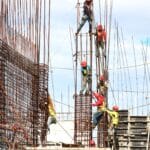In this article, we will be looking at “What is an areas in Construction” “What is RERA”, “Carpet Area”, “Built-Up Area”, “Super Built-Up Area”, “FSI” (Floor Space Index) & “FAR” (Floor Area Ratio). So let’s begin with the article.
Contents
Areas In Construction
While purchasing any residential property one may come upon certain terms like carpet area, built-up area, super built-up area, FSI, etc. In this article, we will try to cover these terms and try to explain them in the simplest possible way.
First, let us know about RERA.
What is RERA?
The full form of RERA is the REAL ESTATE REGULATION & DEVELOPMENT ACT 2016. The act came into effect on 1st May 2017. It is a set of central guidelines based on which each state has to establish some rules which cover under-construction projects. Prior to this, there was no regulatory authority in real estate.
So builders would take unnecessary advantage of customers/buyers. Often builders would not deliver on the committed possession date. This was problematic for customers who used to buy flats by taking loans from banks or financial institutes and were forced to pay EMIs before possession.
Read Also: What is Carpet Area, Build Up Area and Super Build Up Area
The main objective of RERA is regulation and promotion of the real estate sector, protecting the interest of customers and speedy dispute resolution. We shall now study different areas as per RERA guidelines and also before RERA came into effect.
CARPET AREA
The basic definition of carpet area would be the area of a property inside the external walls. Before RERA the area occupied by the internal walls was not included in the carpet area calculation. However, RERA has now included the internal partition walls too in the carpet area.
Before RERA even balconies were included in the carpet area. Now as per guidelines issued by RERA balconies are not to be considered in carpet area calculation. Cupboard areas can be considered in carpet areas.
So, the carpet area includes the area occupied by all rooms like the living room, bedroom, guest room, study room, etc., kitchen, all the bathrooms, and WCs, storerooms, and staircases which are inside the property.
The following are excluded from the carpet area: area occupied by external walls, service ducts, balconies, flower beds, dry balconies, common areas like lift lobby, lift shafts, staircase, terrace (Roof), veranda, etc.
Read Also: What Is Aggregate? Properties of Aggregates | Aggregate Concrete | Gravel Size Chart
Calculation of carpet area
The carpet area can be worked out with the help of the approved layout of the property which will be provided by the builder and comparing it with actual physical measurements. The customers can verify the physical measurement after possession with a measuring tape or by hiring a valuator.
Importance of carpet area
Carpet area basically gives the idea of how much area can be used in the property. It can be used to compare the different properties if options are available at the time of buying. The carpet area can be used to work out the per square feet rate which is helpful in comparing properties.
Example:
Consider a property whose carpet area is 500 sq ft.
The total cost of the property is Rs 2000000.
So the rate per sq ft = 2000000 / 500= Rs 4000 per sq ft.
BUILT-UP AREA
The built-up area of a property includes carpet area, the area occupied by the external walls, service ducts (inside the property), balconies or sit-outs, etc. The ducts which are considered are only those which are inside the property and not those which are in the common areas. Balconies, flower beds, dry balconies, etc. are also included in the built-up area.
Features not included in the built-up area calculation are terrace because it is a roof, common areas like lift lobby, lift shafts, staircase, clubhouse, gym, multipurpose hall, etc.
The formula for built-up area
Built up area (sq ft) = Carpet area + External walls + Service ducts (inside property) + Balconies.
Generally, the built-up area works out to be approximately 10% more than the carpet area. (However, this is not standard practice and the built-up area should be calculated on actual values.)
Importance of the built-up area
The built-up area gives an idea of individually built-up space available for a property. Apart from that, the built-up area is not much useful for end customers. The built-up area is mostly used by government departments like municipalities and planning authorities. It is used to calculate property tax. Building codes issue guidelines considering built-up areas.
SUPER BUILT-UP AREA
The super built-up area is the sum of the built-up area and proportionate common area. So the formula can be given as,
Super built-up area (sq ft) = Built-up area + Proportionate common area
Super built-up area includes the entire built-up area and common spaces like lift lobby, lift shaft, staircase, clubhouse, gym, community hall, indoor swimming pool. One important thing to keep in mind while including the common areas is that these areas should be covered. Then and only then these spaces are included in super built-up area calculations.
The features which are excluded from super built-up areas are open spaces like gardens, driveways, etc.
Calculation of super built-up area
We are already familiar with the formula for the super built-up area as mentioned above. Now, let us calculate the same using an example.
Consider a property that has a carpet area of 700 sq ft. For the sake of simplicity let us assume that the built-up area is 10% more than the carpet area. So
Built up area = Carpet area + 10% of carpet area
= 700 + 10% of 700
= 700 + 70
= 770 sq ft.
To calculate the proportionate common area let us consider that the total common area in the entire building is 5000 sq ft and the total no of flats is 50.
So proportionate common area = 5000 / 50
= 100 sq ft.
Therefore, super built-up area = Built-up area + Proportionate carpet area
= 770 + 100
= 870 sq ft.
Importance of the super built-up area
Before RERA came into effect the pricing of the properties was based on a super built-up area. After RERA this practice was canceled and properties are now sold as per the carpet area.
As we can see from the above example the super built-up area is approximately 24% more than the carpet area. This can be used to compare two properties with somewhat the same carpet area and same price. As a super built-up area depends on a common area, a higher value may indicate more amenities. For example, a higher value of a super built-up area may indicate a bigger clubhouse.
You May Also Like
- Sustainable Building Practices for Relocating to Eco-Friendly Communities

- Seismic Design and Earthquake-Resistant Construction Methods

- The Importance of Soil Testing Before Building Your Home

- Reasons Why You Should Choose MDF Skirting Boards
- How to Start Your Career as a Civil Engineer A Guide for Beginners
Continue Reading…
FLOOR SPACE INDEX (FSI)
FSI basically gives us the idea that how much area which is covered can be constructed on a plot. This is generally decided by the local government bodies and planning authorities and is different for different regions.
Formula for FSI
FSI = Total covered area on all floors / Plot area.
Example:
Consider a structure of 10 floors. Let the area of each floor be 6000 sq ft. So the total covered area on all floors will be 6000 x 10 = 60000 sq ft.
Let the plot area be 30000 sq ft.
So the FSI = 60000 / 30000 = 2.
However as the FSI is decided by the government, the main purpose of it is to determine how much-covered an area can a builder construct on the plot.
Consider a plot of area 20000 sq ft and let the FSI of the region be 1.
So, total covered area = 20000 x 1
= 20000 sq ft.
So one can make a single-storied structure of 20000 sq ft which will cover the entire plot. Or one can cover 50% of the plot area i.e. 10000 sq ft. So We can either construct two floors of 10000 sq ft each or four floors of 2500 sq ft each.
FLOOR AREA RATIO (FAR)
FAR is similar to the FSI. It has a numerical value of 250 or 300. This value means 250% or 300% which in turn can be translated to a value of 2.5 or 3. FAR is used in Delhi.
FSI or FAR of a region depends upon factors like infrastructure facilities, population density, connectivity of that region. A higher FSI is allotted to areas with a high population. better connectivity or areas where vertical development is planned.

